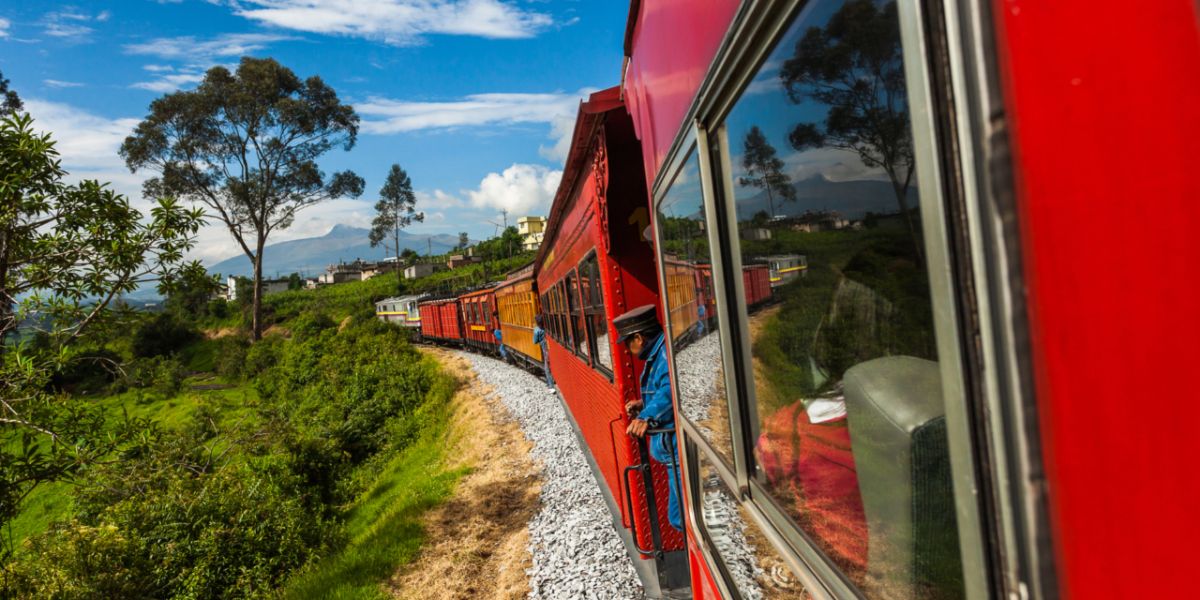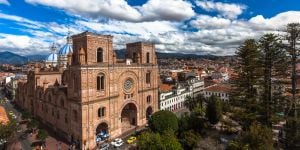
Once in Ecuador, there is so much to explore within the country. How will you be getting to them? What are the transport options in Ecuador?
Buses
Bus travel is the most widespread way of getting around in Ecuador, as well as the cheapest. Long-distance/intercity buses charge around $1 to $2 per hour. The more comfortable ejecutivo or first-class buses are usually reserved for more long-distance drives, and may cost a bit more but still not much more than $2.50 per hour. These buses do not make any unscheduled stops, do not pick up vendors, and are considered safer than the cheaper buses that stop at many locations along the route. They may include air conditioning and bathrooms, usually just for women but men may also avail themselves when needed. Long distance buses usually have a driver's helper who will unlock the onboard bathroom for you, make sure it is clean, and clean up after if needed. These buses often feature a TV screen just above the first two seats, but the movies are not à la carte and are almost always in Spanish. Drivers like to stick to a timetable and may have a propensity for fast driving. This, coupled with winding roads and potholes means that those prone to travel sickness may want to sit near the front rather than in the back. All major and many smaller cities in Ecuador have a Terminal Terrestre, a central bus terminal in which to buy tickets from the various bus lines that traverse the country and even to neighbouring countries. To grab a good front seat in the ejectivo buses, you can usually purchase this seat ticket the day before your travel at the bus line's office at the Terminal Terrestre.
The majority of Ecuador's cities offer efficient public bus service. All of the larger cities and most of the smaller ones all have their own inner-city bus system. Most inner-city bus rides are a flat rate of $0.25, but there is a movement in the larger cities of Guayaquil, Cuenca, and Quito to increase this rate to $0.30. Cuenca has been building a European style TranVia for the last 3 years. This ground level train will traverse the city from the airport in the Eastside to the suburban areas in the west and will open for business in late 2018.
Van travel
The larger cities offer legal, licensed van transport between the major cities in Ecuador. These vans are usually 8, 12, or 20-person vans and travel between Quito, Cuenca, Guayaquil, Salinas, and Manta. These vans will stop if the passengers need bathroom facilities, and are seen as reliable and reputable, but only if they are licensed. Some van companies have been known to utilize unlicensed drivers, so always ask to see the appropriate van transport documents before riding in a van service. Van service is more expensive than bus rides from city to city and will cost around $3.00 to $4.00 per hour.
Airplanes
Air travel is Ecuador's most modern and efficient form of travel. Fifteen cities in Ecuador have airports, but just 2 of these are international: Quito International Airport (Mariscal Antonio José de Sucre), and Guayaquil International Airport (Simón Bolivar). Almost all flights originate or end in Quito or Guayaquil. The country's small size means internal flight times are generally no more than 30 to 45 minutes. Flying is the ideal transportation mode for intercity travel when you have time constraints. Along with being quicker, it's not uncommon for an in-country flight to be cheaper than a long-distance bus trip if the latter includes many hours and expenses like an overnight stay in a hotel and meals. Excluding flights to the Galápagos, domestic flights rarely cost more than USD $170 round trip. A Quito-Guayaquil flight averages to $70.
Taxis
Legal taxis in the major cities answer to the following criteria: they are yellow with orange license plates, display a company name and taxi number, and have their meter activated. They are also required to have 2 cameras operating inside the taxi and have a 'panic' button that is operational for either the driver and the passenger. During the day, rides cost around $1; after dark, an extra $0.50 to $1.00 is added to the fare. It is considered illegal to not have the meter running with a passenger in the vehicle, and if caught, the taxi driver can sustain significant fines. Nevertheless, many taxi drivers will negotiate a fare and choose not to turn on the meter. It is always safe to ask the driver to turn on the meter and if he refuses, you can leave the taxi without paying. Taxis in smaller cities with less transit police presence (such as the beach areas) frequently prefer to negotiate a fare instead of using a meter. In this instance, you can negotiate and settle on a fare for the ride.
Private cars and drivers
Most larger cities offer 'executive' drivers, and many hotels in Quito and Guayaquil prefer to utilize these 'known' drivers instead of regular licensed taxis. They are not technically legal and are not liked by the taxi coops but are ubiquitous, courteous, friendly, and can often be safer options. As they are known and trusted by the hotels, they are safe to use, particularly if you want to hire a driver for a day trip or wish to call them for a later pickup. The hotel can arrange the ride and negotiate the fare for you, which will always be a bit higher for short rides, usually about a $1 more than a metered taxi fare. In addition, many private car owners operate themselves as unlicensed taxis. These private drivers have been known to develop significant expat customer lists only through recommendations. Always make sure you know the driver and are confident that the private driver has a good driving record or is known to either your hotel or personal acquaintances before you drive with any non-licensed driver.
Good to know:
Real crime issues are sometimes linked to transport in Ecuador. Knowing what responsible habits to adopt is essential to ensure your own safety.
Useful links:
Schedules & tickets for Ecuador's buses & flights
More details on transport in Ecuador
Buses in Ecuador
Bus companies in Quito
Maps of bus lines in Cuenca
Air travel
TAME
Latam Ecuador
Ecuador Rental Car group
Cuenca Car Share
Taxi scams to be aware of
Train schedule
Ecuador's railway in the sky
Van service
Van service
We do our best to provide accurate and up to date information. However, if you have noticed any inaccuracies in this article, please let us know in the comments section below.








